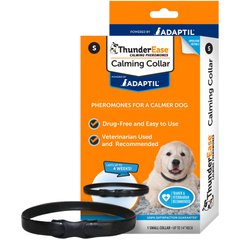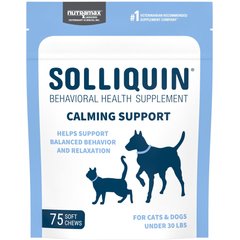8 Dog Nose Facts You Probably Didn’t Know
Your pup’s nose is a powerful device that guides him through his days in some pretty impressive ways.
“Dogs noses are specifically adapted to function much better than ours,” explains Dr. Michael T. Nappier, DVM, DABVP, of the Virginia Maryland College of Veterinary Medicine.
“They have up to 300 million olfactory receptors in their noses, versus only about 6 million for us. And the part of their brain dedicated to interpreting these is about 40 times larger than ours,” says Dr. Nappier.
Facts About Your Dog’s Nose and Amazing Sense of Smell
Here are eight more interesting facts about your dog’s sense of smell that prove that canines have superior noses.
1. A dog’s nose has two functions—smelling and breathing.
According to Dr. Nappier, a canine’s nose has the ability to separate air. A portion goes directly to the olfactory sensing area (which distinguishes scents), while the other portion is dedicated to breathing.
Shop Toys, Training and More
- ThunderEase Powered by ADAPTIL Calming Pheromone Collar for Dogs, Small, up to 14-in neck$19.99Chewy Price
- Nutramax Solliquin Soft Chew Calming Behavioral Health Supplement for Small/Medium Dogs & Cats, 75 count$19.99Chewy Price
- ThunderShirt Classic Anxiety & Calming Vest for Dogs, Heather Grey, Medium$41.64Chewy Price
- Purina Pro Plan Veterinary Diets Calming Care Liver Flavored Powder Calming Supplement for Dogs, 30 count$33.99Chewy Price
2. Dogs have the ability to breathe in and out at the same time.
“When sniffing, dogs’ noses are designed so that air can move in and out at the same time, creating a continuous circulation of air, unlike humans who have to either breathe in or out only,” says Dr. Nappier.
3. Dogs have a special organ that gives them a “second” sense of smell.
According to Dr. Nappier, a dog’s vomeronasal organ helps them detect pheromones, which are chemicals that animals release that affect other members of the same species. This organ plays an important role in reproduction and other aspects of canine physiology and behavior.
4. Dogs smell in 3-D.
Dogs can smell separately with each nostril. Just as our eyes compile two slightly different views of the world, and our brain combines them to form a 3-D picture, a dog’s brain uses the different odor profiles from each nostril to determine exactly where smelly objects are located.
5. Dogs can smell the passage of time.
Dogs can detect the tiny reductions in the concentrations of odor molecules that occur over short periods of time. This allows tracking dogs to quickly determine which direction a person or animal has gone in by sniffing the ground.
6. Dogs' noses have evolved to help them survive.
According to Dr. David C. Dorman, DVM, PhD, DABVT, DABT, professor of toxicology at North Carolina State College of Veterinary Medicine, dogs have used their noses to assist with major life events since the beginning of time.
“Evolutionarily, a dog’s sense of smell helps them find a mate, offspring, and food, and avoid predators,” he says.
7. Dogs can smell up to 100,000 times better than humans.
Dr. Nappier puts this tidbit into perspective with an awe-inspiring analogy. “A dog's sense of smell is its most powerful sense,” he says. “It is so sensitive that [dogs can] detect the equivalent of a 1/2 a teaspoon of sugar in an Olympic-sized swimming pool.”
8. Some breeds have a better sense of smell than others.
While all dogs have strong sniffers, Dr. Nappier says, “hound breed dogs have the best sense of smell.” Dr. Dorman points out that sturdy working dogs like German Shepherds and Labradors also rank high in their smelling abilities.
Some dogs, like Pugs, that have short faces (also known as brachycephalic dogs), may “have some airway compromise that could affect their sense of smell,” explains Dr. Nappier.
Featured Image: iStock.com/Мария Фисенко




